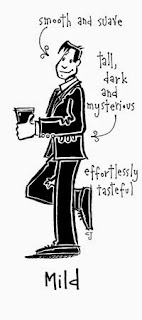 |
| Town square - Jihlava on a rainy May morning |
What follows is a brief synopsis of the trip. I had planned to post this article on my other bog site; Paul’s Beer Travels, but as I post stuff rather infrequently on that site, and it consequently gets only a few viewings, I thought it would be better here, on the main blog site.
 |
| Ježek Brewery Restaurant, Jihlava |
However, at the end of the war, and following the Beneš decrees, most German speakers were expelled due to their alleged support for the Nazi occupation of the country. The town was repopulated with Czech and Moravian settlers favoured by the new Communist regime. The influence of the former inhabitants’ lives on, as we discovered, for the second language of most of Jihlava’s citizens is German, rather than English but fortunately there were quite a few amongst our group, myself included, who could speak sufficient German to get by. The absence of our native tongue indicated that visitors to this area from the UK are comparatively rare, and I don’t recall hearing a single English, or for that matter American, voice whilst we were there.
 |
| Urban Brewery - Třebíč |
The town is constructed on a hill, and the remains of the old town walls can clearly be seen in places. Lying beneath Jihlava is an extensive network of underground passages and tunnels, extending for a total of 25 km and occupying an area of some 50, 000 m². Although they are believed to have been excavated during the 14th and 15th Centuries by the silver miners, they are not located in silver-bearing rock. They are believed to have been constructed for a mixture of storage and defensive purposes.
With its good road and rail connections, Jihlava served as a good base for exploring this south-central region of the Czech Republic, and we travelled quite extensively during our three and a half day stay in the town. On our first evening in the town we made the hour and three-quarter long bus trip to Třebíč, which is the second largest town in the region. Here we visited the Podklášterní Pivovar, brew-pub, although from what I saw and have subsequently read, Třebíč itself appears to be a town which is well worth visiting.
 |
| Local train |
 |
| Slavonice |
On Thursday we switched to rail as our mode of transport, making the two hour journey to Slavonice; once an important staging post on the old coach road between Prague and Vienna, but today a town which time seems to have largely passed by. This was our “cultural day”, as after a brief look around this border town, followed by a slightly longer lunch, we re-boarded the train for a visit to the UNESCO World Heritage town of Telč.
 |
| Main Square - Telč |
The journey back took us through some of the most pleasing countryside I have seen; with rolling hills, dark forests and stretches of verdant green pasture. Numerous fish ponds dotted the landscape, providing fresh fish for the villages we passed through on the way, as we travelled along winding country roads, lined by blossom-laden apple trees. It seemed a shame when the journey ended and we arrived back in Jihlava!
 |
| Typical rural station. Note the stationmaster with his red hat. |
We returned to the station, after our trip round the Chotěboř Brewery, for a lunchtime drink, or three, in the substantial, and popular, station restaurant, before catching the train back to Havlíčkův Brod. This town is home to the Rebel Brewery, and our itinerary included a visit to the brewery restaurant, situated in the centre of Havlíčkův Brod.
 |
| Havlíčkův Brod |
The above is just a brief synopsis of our trip, and I intend to write in more detail, later on, about some of the places we visited, the pubs and restaurants we found and, of course, the beers we drank.












.png)

















